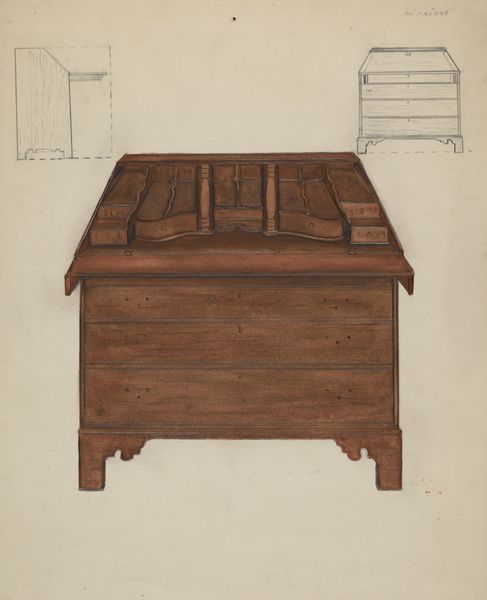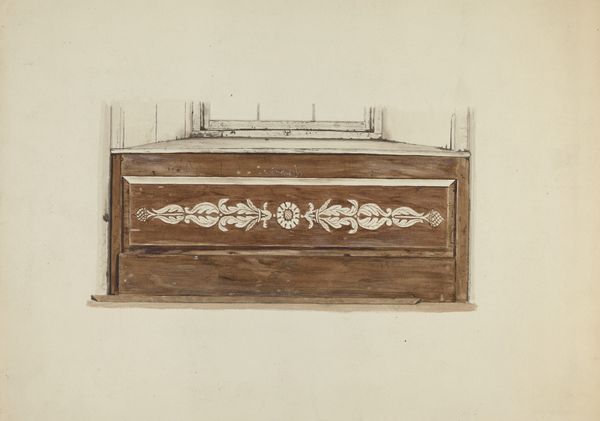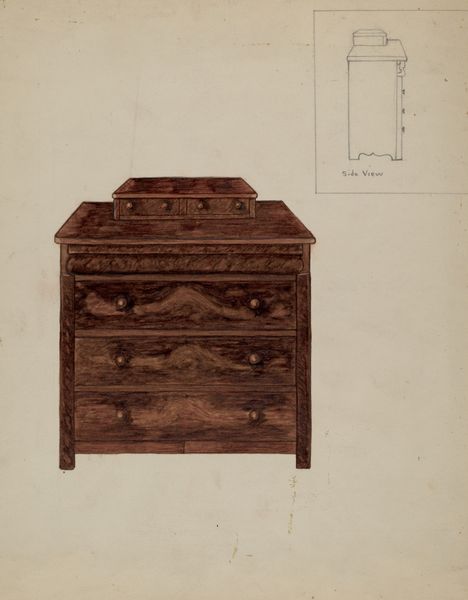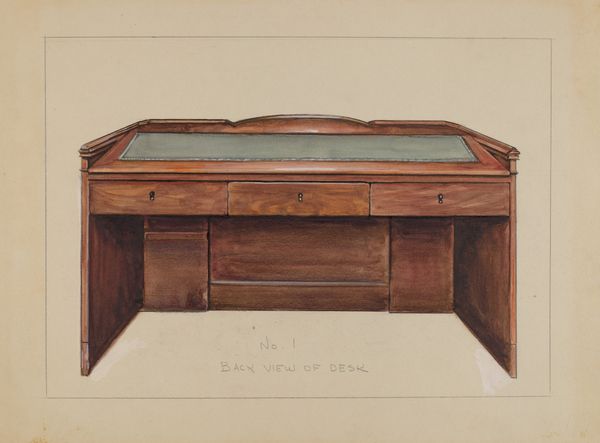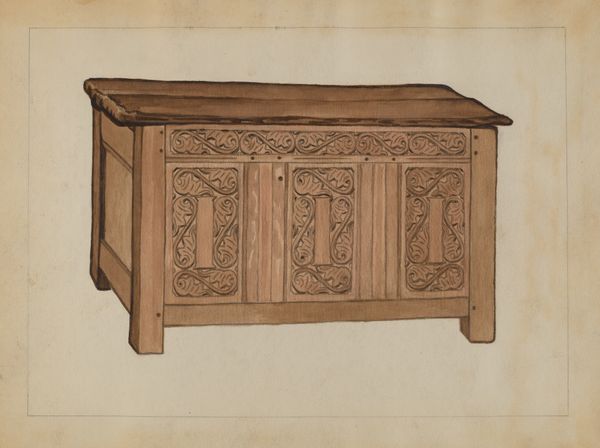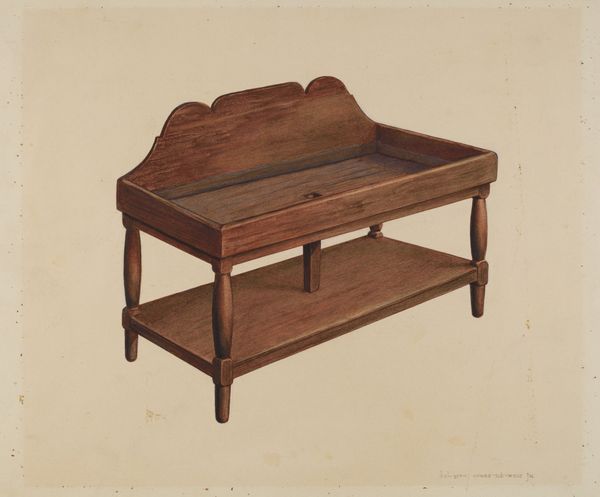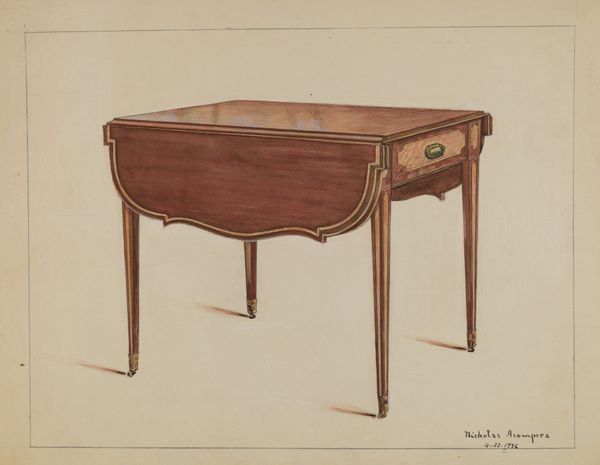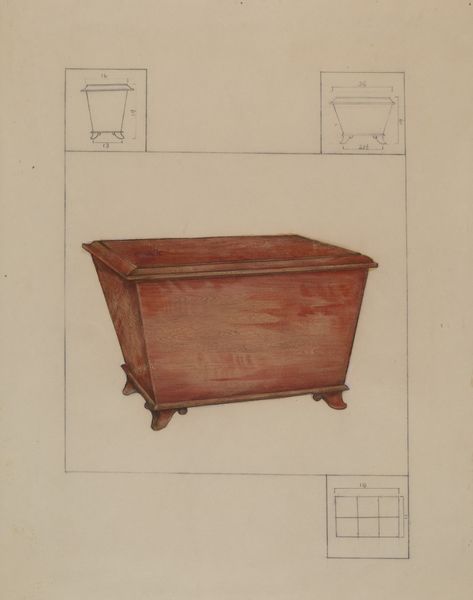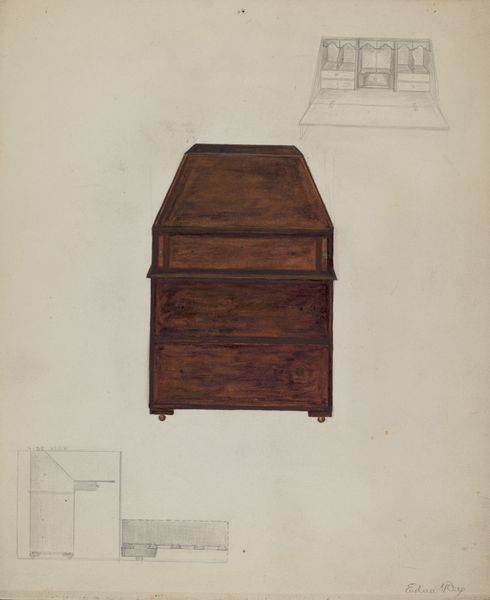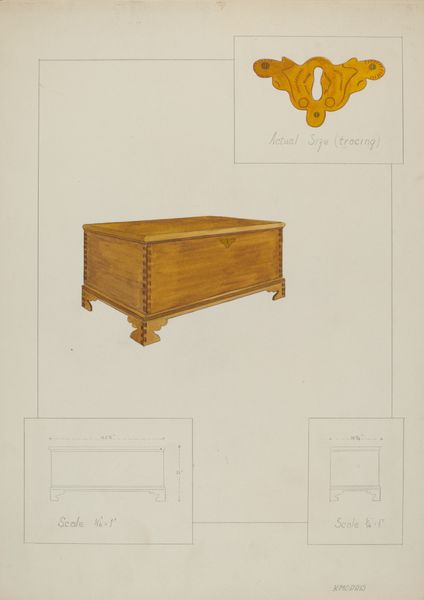
drawing, watercolor
#
drawing
#
figuration
#
watercolor
#
watercolour illustration
#
realism
Dimensions: overall: 22.8 x 30.2 cm (9 x 11 7/8 in.)
Copyright: National Gallery of Art: CC0 1.0
Curator: The watercolour drawing before us, simply titled "Cradle," from around 1953, presents a rather conventional object, but its ordinariness might be precisely where its power lies. What strikes you about it? Editor: I'm drawn to its simplicity. It’s just… a cradle. The lines are clean, almost architectural. I suppose it feels peaceful, like a symbol of domesticity and beginnings, but it could also suggest constraint and societal expectations of women. How might you interpret it? Curator: Absolutely, and that tension is crucial. On the surface, we have an image tied to the domestic sphere, a realm historically associated with women and often devalued within broader social structures. The cradle becomes more than just a piece of furniture. It signifies the social construct of motherhood, and how that can intersect with female identity and opportunity. Who decides its meaning and role? What feelings of responsibility or obligation does it instill? Editor: So, it becomes a site of both comfort and societal pressure? I hadn't considered the broader social implications. I guess I saw the image first, before the ideas. Curator: Precisely! It also hints at the political implications behind seemingly 'neutral' objects and settings, suggesting how these impact individuals through often invisible structural frameworks. Look at the drawing's starkness. What's absent? Editor: A child. That adds another layer of… emptiness? Like the potential hasn't been filled yet, or maybe the pressure of expectations has not come to fruition? Curator: Exactly! That absence amplifies its social charge and connects us to broader discussions about women, domestic labor, and imposed roles, doesn’t it? Editor: Definitely. I appreciate that your reading encourages looking beyond its literal meaning. Now, I see it as a poignant representation of societal expectations and hidden realities, far from being 'simply' a cradle. Curator: And hopefully, this expanded understanding encourages each of us to question how these social structures affect the experiences around us.
Comments
No comments
Be the first to comment and join the conversation on the ultimate creative platform.
